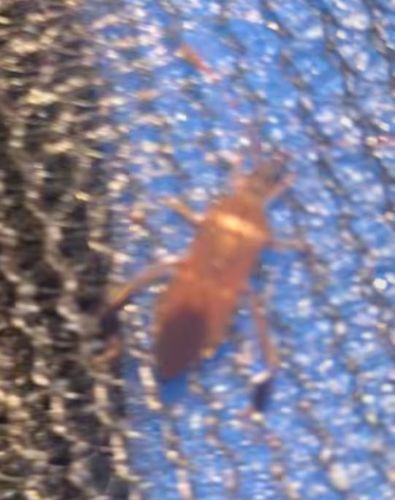Assassin Bug (likely a nymph)
Scientific Name: Reduviidae (family)
Order & Family: Hemiptera, Reduviidae
Size: Varies greatly by species, but adult assassin bugs can range from 0.5 cm to 4 cm (0.2 to 1.6 inches). Nymphs would be smaller.

Natural Habitat
Various, including gardens, fields, forests, and sometimes around human dwellings. They tend to hide in foliage, under rocks, or in other shelters.
Diet & Feeding
Predatory; they feed on other insects and small invertebrates. They use their strong, piercing-sucking mouthparts (proboscis) to inject venom and digestive enzymes into their prey, then suck out the liquefied tissues.
Behavior Patterns
Assassin bugs are ambush predators, lying in wait for unsuspecting prey. Some species are mimetic, resembling twigs or ants for camouflage. The nymphs often resemble adults but are smaller and lack fully developed wings. They undergo incomplete metamorphosis.
Risks & Benefits
Potential risks include a painful bite if provoked or handled, though they are not typically aggressive towards humans. Their bite can cause localized pain, redness, and swelling, similar to a bee sting, but is rarely medically significant. Benefits include their role as natural pest control, as they prey on many garden and agricultural pests.
Identified on: 9/27/2025